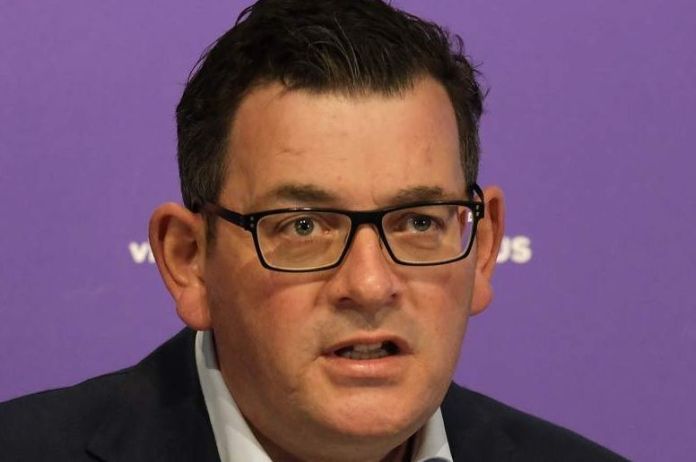The latest comment from the World Health Organization (WHO) Special Representative on COVID-19 has raised questions about the legitimacy of lockdowns to stop the spread of the coronavirus.
“We at the World Health Organization are not advocating lockdowns as the primary means of combating this virus.”
This statement by Dr. David Nabarro has also raised questions about whether the WHO turned back its advice months after the pandemic was declared.
When should lockdowns be considered, what is WHO advice and how is this affecting Australia?
The WHO doctor urges world leaders to use other control methods
The most recent discussion of strict lockdowns began after the WHO special envoy on COVID-19 stated that they should not be used as a primary method of control.
Dr. Nabarro gave the statements in an interview with The Spectator.
“The only time we believe a lockdown is warranted is to buy you time to reorganize, regroup, and rebalance your resources. Protect your exhausted health workers, “said Dr. Nabarro.
“But on the whole, we’d rather not do it.”
Loading
Dr. Nabarro told The Spectator that the economic impact on small countries that rely on tourism and increased poverty are two main effects of community closure.
“We really appeal to all world leaders. Don’t use lockdown as your primary method of control anymore, ”he said.
“Lockdowns have only one consequence that must never be belittled, and that makes poor people a lot poorer.”
While the statements themselves seem to call for an end to the lockdowns, the message is in line with an article Dr. Nabarro wrote days earlier.
Under the title “Reflections on the Middle Way”, he advocates that governments around the world find a balance between restrictions and normal life.
“Too many restrictions damage people’s livelihoods and provoke resentment. ‘Virus running wild’ will result in many deaths and the long-term debilitating COVID in younger people, ”he wrote.
The message of the article is that health measures that include strict personal hygiene, effective contact tracing, and isolation from illness are the essential measures that must be taken.
“Public health services are organized to provide locally integrated support for disruption of transmission and suppression of clusters,” he wrote.
“This means that service-trace-isolate protection services are offered everywhere with clearly justified performance metrics.
“It is important that there is enough testing capacity to detect the virus, detect spikes and handle voltage spikes.
“Lockdowns simply freeze the virus … they don’t eliminate it.”
When should bans and restrictions be lifted?
The WHO has put forward a six-step plan for governments to ease restrictions.
To ease restrictions, the WHO said governments should:
- Make sure the transfer is under control
- Make sure health systems can cater for any event – including backtracking and isolation
- Minimize risks in healthcare facilities, including nursing homes
- Take preventive measures in workplaces, schools and other important locations
- Manage the risk of the virus being imported from another location
- Make the community fully aware of the new normal and how to protect yourself
Does this mean WHO has turned back its advice?
Not necessarily.
WHO has been advocating contact tracing, hygiene and isolation since the beginning of the pandemic.
During a press conference on April 14, WHO Director General Tedros Adhanom Ghebreyesus spoke directly on the lockdown.
He said while some countries may have considered bans, tracing contacts is an essential action that all governments would need.
“We know that finding, testing, isolating, handling every case and tracking every contact early on is essential to stop transmission,” he said.
“As I’ve said many times before, physical distancing restrictions are only part of the equation, and there are many other basic public health measures that need to be implemented.”
The director general also spoke about the impracticability of lockdowns in countries with weaker economies, similar to what Dr. Nabarro across from The Spectator.
“In countries with large poor populations, the home-stay orders and other restrictions that apply in some high-income countries may not be practical.
“Many poor people, migrants and refugees already live in overcrowded conditions with few resources and little access to health care.
“How do you survive a lockdown when you have to rely on your daily work to eat?”
Dr. Margaret Harris, a spokeswoman for the WHO, was asked Monday morning whether the organization had backed out on its own advice.
Dr. Harris appeared on the Chanel Nine Today Show and said the backflip allegations were the result of false coverage of Dr. Nabarro’s comments.
“Right from the start we said what we’d really like to see is strong community tracking, tracing and hand washing [and] Wear a mask so you don’t have to go into lockdown.
“A lot of countries have had to lock down, but we say do everything else to avoid going there because the economic and social costs are very high.”
This statement by Dr. Harris on Monday is in line with a statement she made to Australian media in April.
In an interview with the Sydney Morning Herald and The Age – both owned by Chanel Nine – she said WHO advocates strong contact tracing.
“We never said to lockdown – we said, track, track, isolate, treat,” said Dr. Harris.
How did Australia deal with bans?
This now leads us to one of the big questions: if WHO says lockdowns are a last resort, why do parts of Australia still have them?
Bans and restrictions in Australia have been in the spotlight for months.
Victoria’s numbers are very low compared to the peak of his second wave.
Queensland and Western Australia have virtually no community broadcast but still have different border restrictions.


As early as April – less than a month after the first major coronavirus restrictions were put in place – current acting Chief Medical Officer (CMO) Paul Kelly said the Australian coronavirus strategy had recognized the possibility of a second wave.
He said the measures being taken are to move the second wave as far into the future as possible to ensure the nation is ready to deal with an increase in cases.
“And that’s why the prime minister has set precedents before we ditch social distancing and socialization of case finding and keep cases as low as possible,” he said at a press conference.
“When cases arise [it’s about] Find them quickly, find their contacts, quarantine them and reduce the size of outbreaks we may have by being very detailed and quick to respond. ”
He added, “This ability to quickly and accurately perform laboratory tests, find cases and find their contacts is another reason to download the app. It will help us fight a second wave.
“The longer we leave this second wave in the future, the more likely it is that we will receive successful treatments.”
The incumbent GMO also said at the time that it would be up to states and territories to use their own judgment to relax lockdown restrictions at their discretion based on the rate of infection.
“This is not a mixed message. It’s a changed message, ”he said.
“And, as always, we will commit to sharing these differences and announcements as they occur.”
These were the details of the news The WHO doctor says lockdowns shouldn’t be a primary line of... for this day. We hope that we have succeeded by giving you the full details and information. To follow all our news, you can subscribe to the alerts system or to one of our different systems to provide you with all that is new.
It is also worth noting that the original news has been published and is available at de24.news and the editorial team at AlKhaleej Today has confirmed it and it has been modified, and it may have been completely transferred or quoted from it and you can read and follow this news from its main source.



